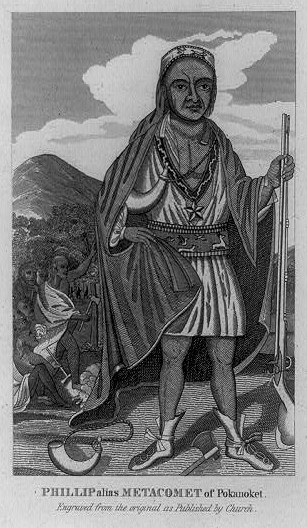Part of a series of articles titled Selections from Historic Contact: Early Relations Between Indian People and Colonists in Northeastern North America, 1524-1783.
Article
Understanding Northeastern Contact Part II

Collections of the Library of Congress. https://www.loc.gov/item/89707293/
Selections from the National Historic Landmark Theme Study
By: Robert S. Grumet, National Park Service, 1992
Understanding Northeastern Contact Part II
While the exact beginnings of contact remain unclear, the consequences of the “Columbian Exchange” are well known. Contact changed very nearly every aspect of life in the North Atlantic world. Collectively, these changes represented only the most recent of a long chain of events that had transformed life on both sides of the Atlantic in revolutionary ways since the 14th-century. These changes neither occurred overnight nor did they unfold in orderly predictable ways. Instead, they were the results of complex processes whose impacts were felt in different ways by different people at various times and places.
This does not mean that all changes were random. Archaeological evidence indicates that Indian life throughout all but the northernmost reaches of the region began to focus around unprecedentedly larger and more centralized settlements as Europeans moved towards the Renaissance during the 14th and 15th centuries. Most of these people began crafting new and distinctive forms of poetry, stone tools, and shell ornaments as they produced more substantial crops of corn, beans, and squash. Other evidence suggests increasing incidences of trade, warfare, and migration throughout much of the region as explorers sailing for newly emergent European nations began to chart Atlantic shores during the 1500s. Written records chronicling the early decades of the 1600s corroborate archaeological evidence attesting to intensifications of these and other developments as Europeans managed to establish their first successful permanent footholds along the Atlantic seaboard.
Archaeological remains, written documents, and oral traditions show that Northeastern Indian people adopting European imports gradually shifted production from stone tools, clay pots, and other traditional manufactures to trade commodities such as beaver pelts and wampum shell beads as the 17th century wore on. Adoption of European manufactures gradually turned to dependence as native people abandoning ancestral skills found themselves unwilling or unable to live without foreign goods. Ironically, most Northeastern Indian people ultimately became dependent upon imports at the same time settlers struggling to reduce their own dependence on home country markets freed themselves from direct European political control by 1783.
Last updated: May 21, 2019
